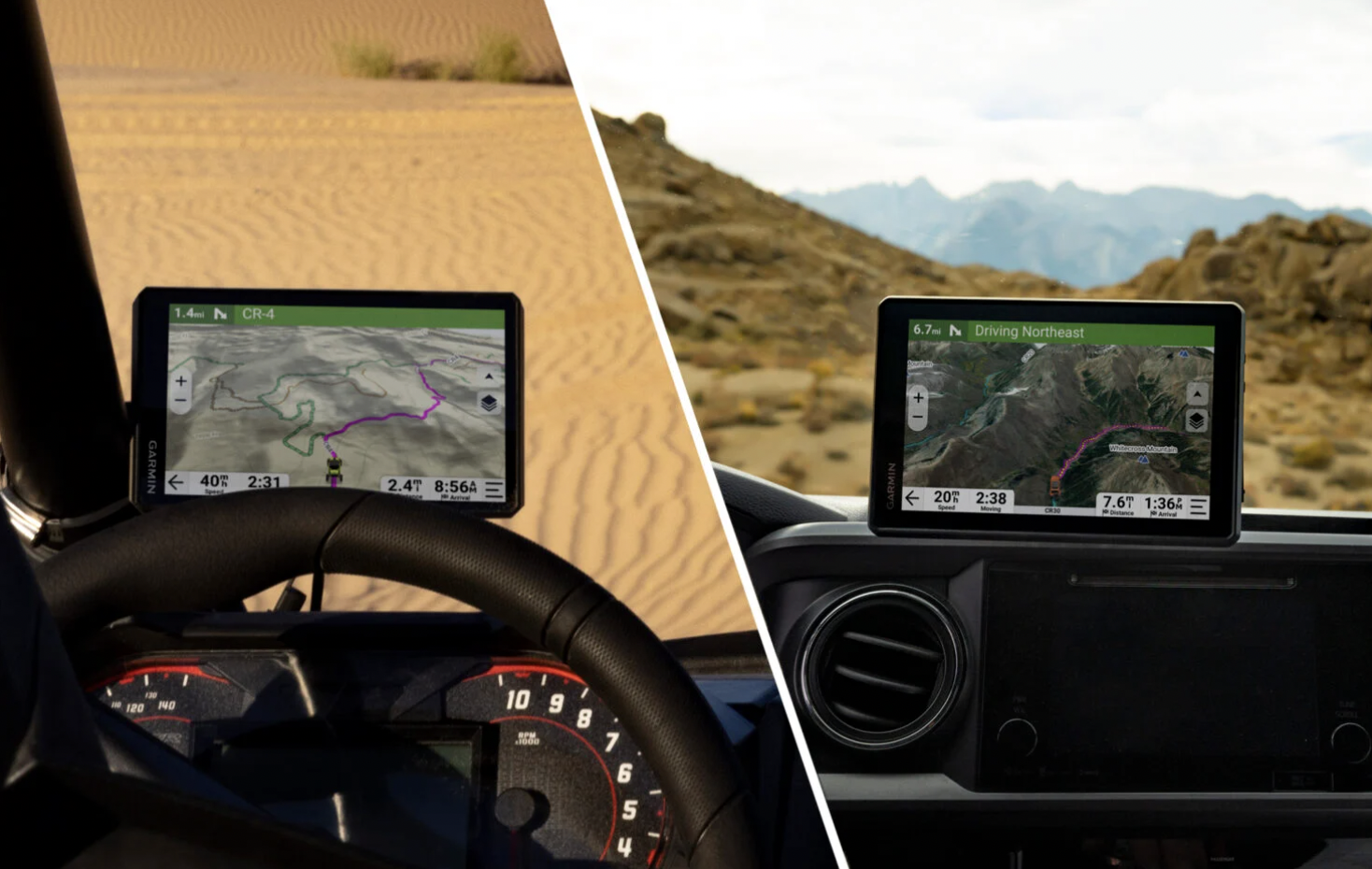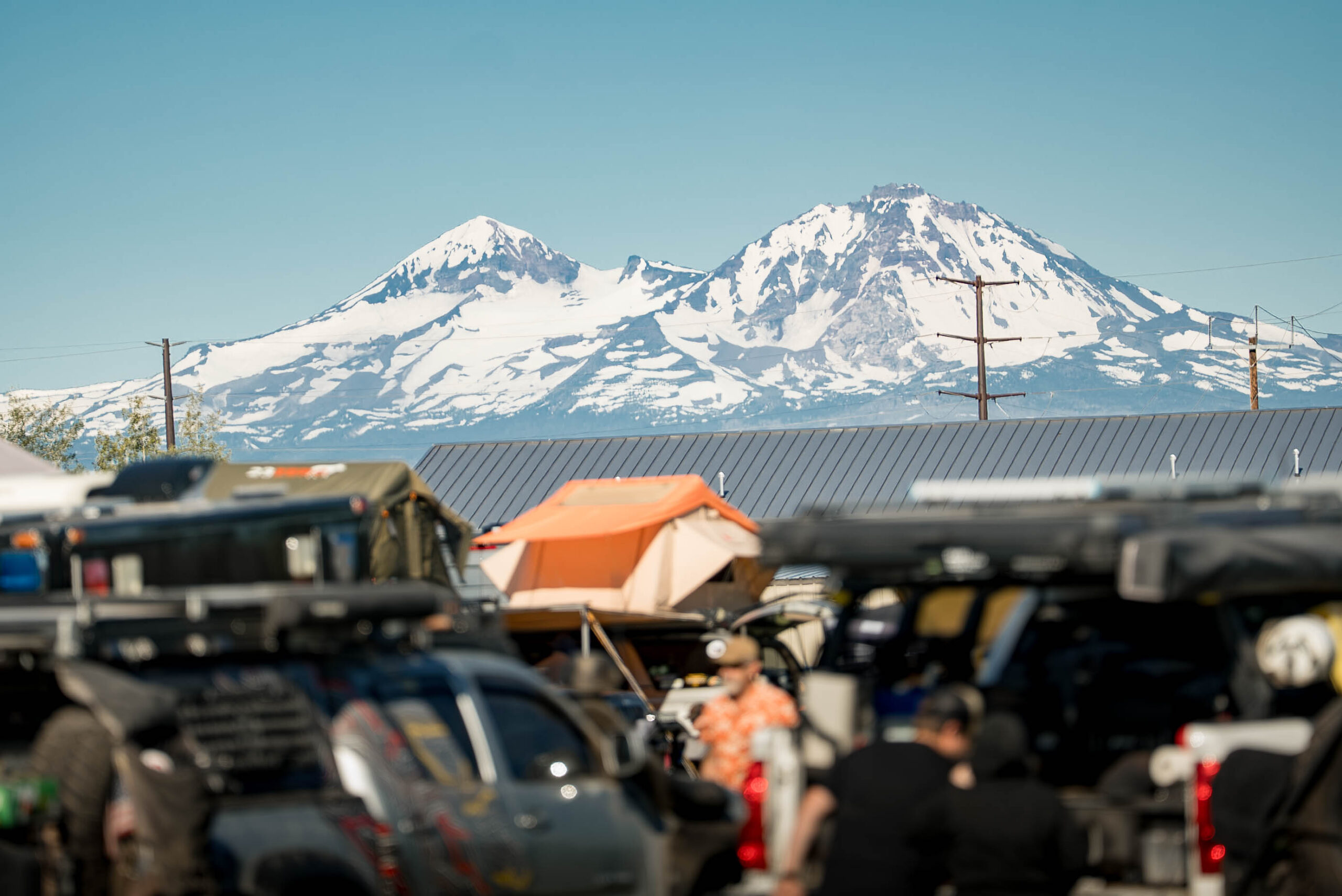In the overlanding world, there have long been two camps (pun intended): rooftop tent owners on one side and trailers, campers, and vans on the other.
Each offers their own benefits and drawbacks. Rooftop tents are lightweight but offer little in terms of hard-sided weather protection or heat. Larger, more traditionally structured vehicles and pull-behinds boast insulation and improved accoutrements but suffer from being sometimes cosmically heavy. Unfortunately there’s never been a midpoint between the two. That is, until now.
Enter Redtail Overland and its ingenious hard-sided rooftop tent — AKA the rooftop camper (RTC).
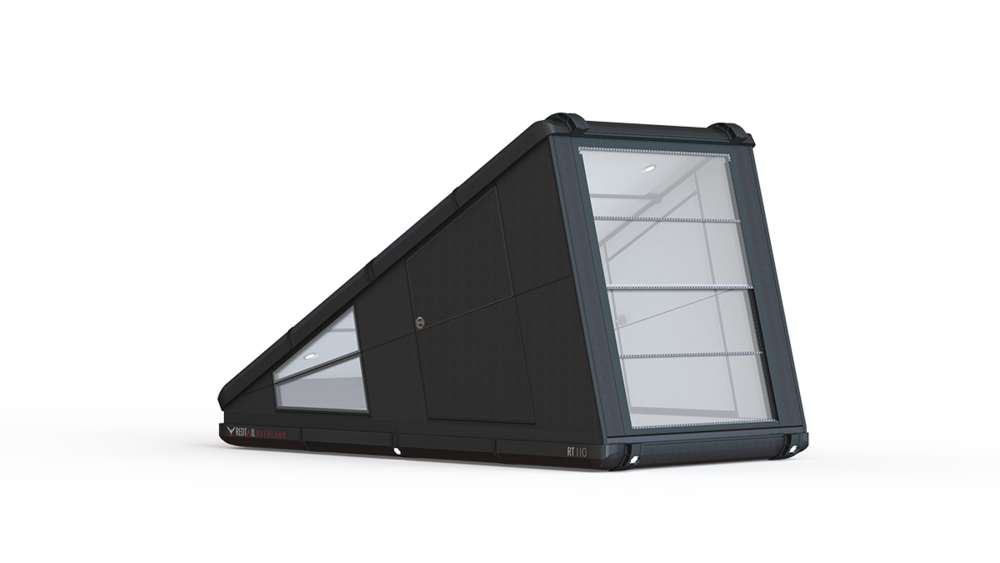
Redtail Overland Hard-Shell Rooftop Tent
Redtail Overland was founded by husband-and-wife team Ty and Annie Tatro, who both spent a combined 18 years at Earthroamer. Ty was the firm’s COO and President and Annie was its Chief Sales and Marketing Officer. They departed Earthroamer in 2019 and started Redtail Overland.
They’ve taken their combined 25 years in the overland space and created something pretty innovative for their first product: the hard-side rooftop tent.
The RTC comes in two sizes 90 and 110 — surely an homage to the Land Rover Defender. Although the two models differ in size, they share the same innovative features and creature comforts. But, before we get into those, let’s start with their distinguishing dimensions.
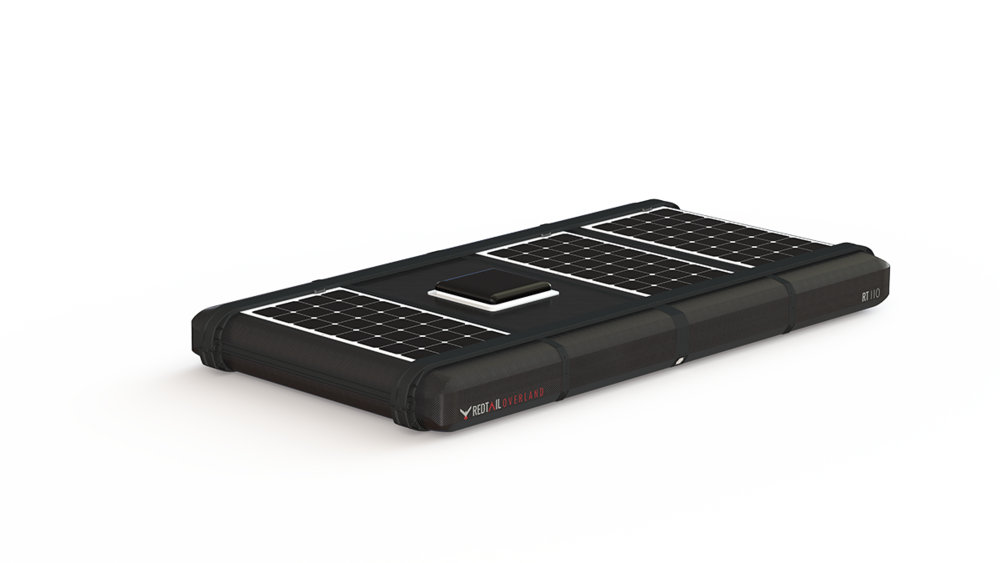
Redtail Overland Hard-Shell Rooftop Tent
Closed, the 90 measures 90” x 56” x 10” (14” high at fan dome). Open, it is 90” x 56” x 60” at its highest point. Inside, overlanders will find an ample 82” x 53” x 57” of living space.
The 110 is naturally a bit larger. It measures 110” x 60” x 10” (14” high at fan dome) closed, 110” x 60” x 65.5” at the tallest point when open, and offers 101” x 57” x 62” at the tallest point of space to stretch out in. The 90 weighs 190 pounds. The 110 clocks in at 250 pounds.
Aside from their sizes, the 90 and 110 share the same features, which, if I am honest, are incredibly impressive.

Redtail Overland Hard-Shell Rooftop Tent
Both RTC models are shaped from insulated carbon fiber composite, from the roof to the floor to the corners and end panels. They are outfitted with billet aluminum side brackets that can hold awnings or shovels, for example. And the hinges and other hardware are made from stainless steel.
The structure is so strong that — without an additional rack system — it can support three crossbars, ideal for mounting bike racks, ski racks, MAXTRAX, RotopaX containers, or virtually anything else you might normally stow atop your rig. Granted, other hardtop rooftop tents boast similar cargo-carrying capabilities. It’s the interior where Redtail’s RTC stands out.
Inside, customers will find a three-inch foam mattress that is split into two sections. For reference, the larger section can fit a queen-size mattress sheet while the smaller section can fit a twin-mattress sheet. The mattress is split into two sections to enable campers to access the tent from the bottom — through their vehicle’s moonroof, for example.

Redtail Overland Hard-Shell Rooftop Tent
The inside of the RTC is as opulent as the exterior is sturdy. The side walls are upholstered and the headliner is soft-touch. The plush interior is heated by a Webasto diesel heater with automatic altitude adjustment (at 11,000 feet) with a variable-speed fan. Interior temperature is further regulated through the heat vents in the ceiling.
The dual-pane polycarbonate windows feature fixed upper and operable lower portions, allowing ample natural light in. The movable windows are held in place with a window-stay system. Water is kept out of the interior thanks to the waterproof seals and hinges.
When the sun goes down, the interior can be illuminated by the integrated dimmable LED interior lighting, which can be set to a white or red light spectrum. These are matched by dimmable exterior LED lighting from Baja Designs.
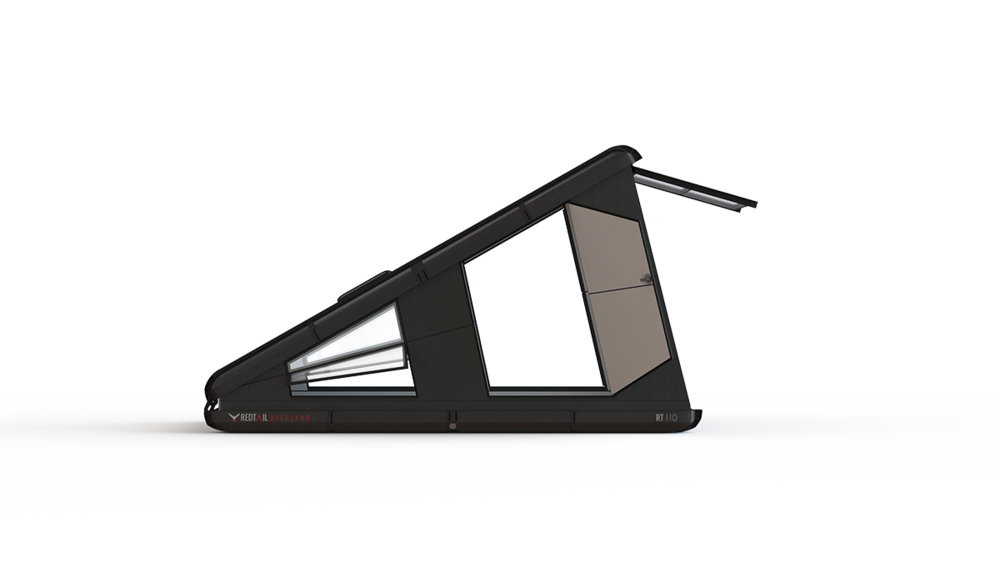
Redtail Overland Hard-Shell Rooftop Tent
Lighting power is sent from the integrated lithium-ion battery bank (rated at 60 amp hours on the 110; 40ah on the 90) through Marine-grade wiring. Each corner of the RTC are further fitted with dual USB-C ports, for recharging mobile devices. Interior electrical power itself is sourced from the roof-mounted solar panel array. The 110 has a 330-Watt solar array and the 90 has a 210-Watt array. The onboard battery’s charge level can be monitored through a Bluetooth app.
When you’re ready to hit the road, the Redtail Overland RTC remains securely stowed thanks to the built-in keyed locking system. But when you’re ready to camp again, it deploys with the literal push of a button.
Obviously, this is far from your ordinary rooftop tent. And the tentative pricing reflects that. Redtail Overland pegs a $20,000 to $25,000 suggested retail price for the 90 and 110 RTCs respectively. Production is scheduled to begin in August in Colorado, where the RTCs will be hand built.
If you’d like to see the RTC in person, the prototypes will be on display at the rescheduled Overland Expo West, July 24-26 at Fort Tuthill in Flagstaff, Arizona.
Header image credit: Redtail Overland
